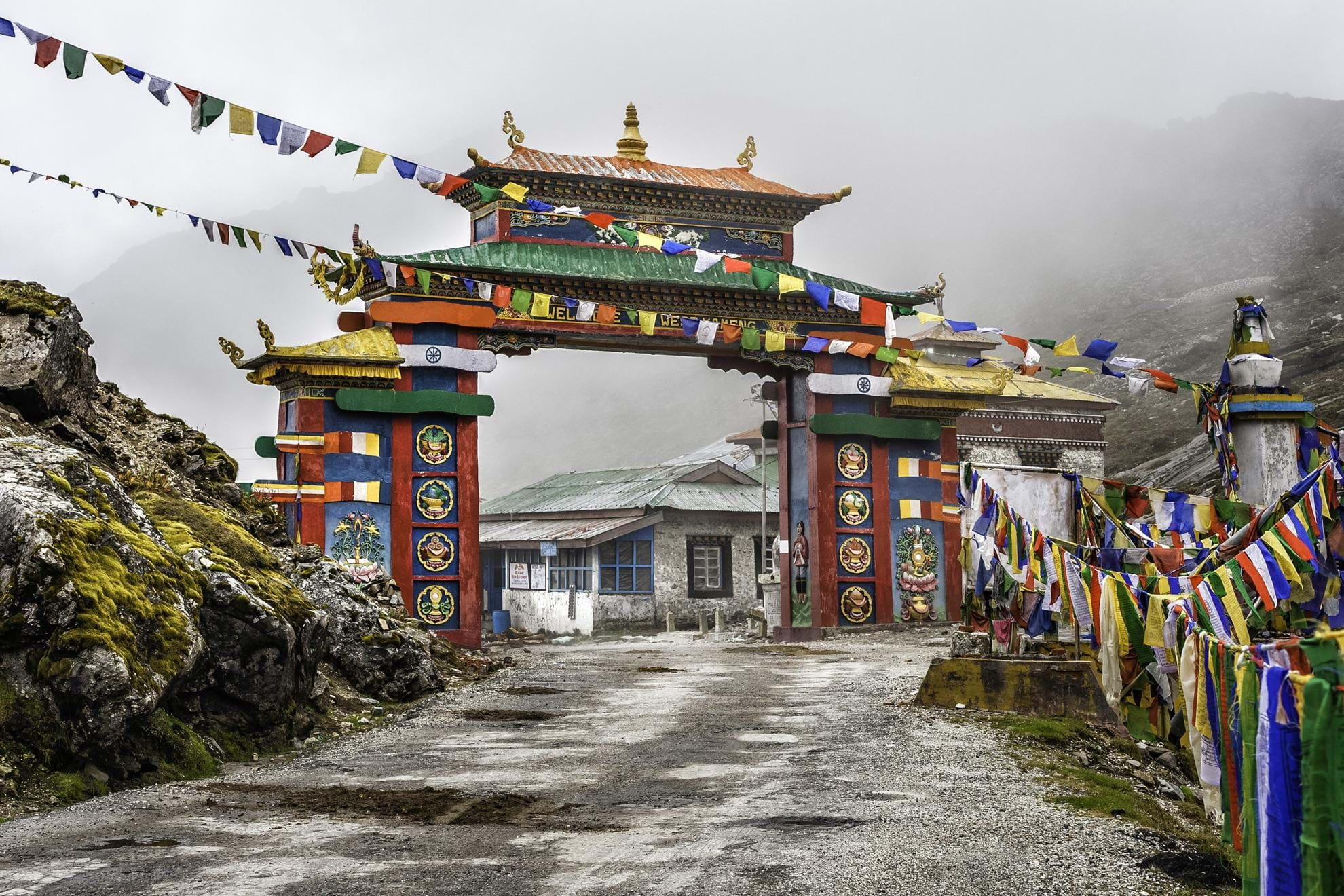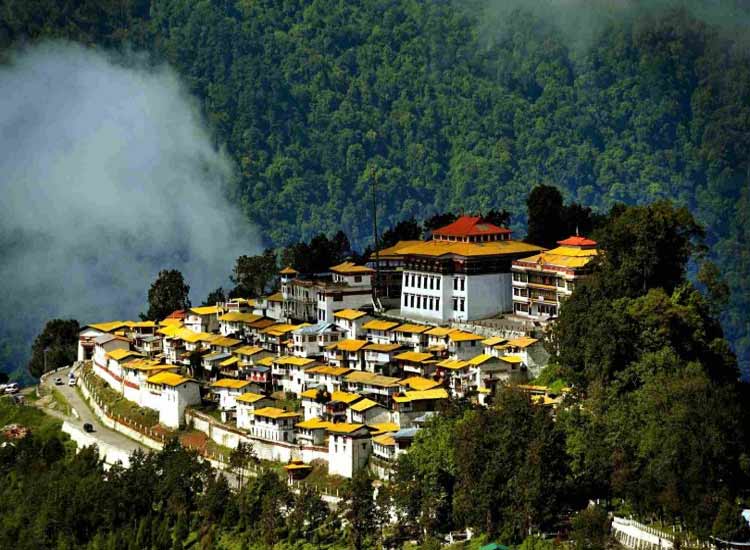Tawang
Tawang
Tawang receives snowfall every year during December–January.[31] There is also a ski lift in town. Visitors to Tawang, as is the case with the entire Arunachal Pradesh, require special Inner Line Permit (ILP) issued by the concerned government body and can be obtained from offices based in Kolkata, Guwahati, Tezpur, and New Delhi. Most of the travel from the plains is on a steep hill road journey, crossing Sela Pass at 4,176 metres (13,701 ft). Tourists can travel to Tawang from Tezpur, Assam by road and Tezpur has direct flights from Kolkata. In Oct 2014, a biweekly helicopter service from Guwahati was started by the Arunachal Pradesh government.
It is said that during the reign of King Tri Ralpachen (reign during 815-838 AD), Lang Dharma, the apostate brother of the King and some of the ministers who were opposed to Buddhism conspired to assassinate the King. However the assassination plan was dropped on realizing that the king’s other brother Lhase Tsangma, had a better chance of being enthroned in the event of the death of the King. Instead a plan was hatched to remove Lhase Tsangma from the scene. In this pursuit, they took the help of royal god men and soothsayers by giving them heavy bribes for poisoning the mind of the king. They falsely predicted that misfortune would befall on the royal family and the country as a whole and to avert the imminent misfortune,Lhase Tsangma need to be sent out of the country for a while. The king believed in the prediction and ordered Lhase Tsangma to leave the country, for the time being, for Monyul in the interest of the kingdom. He was also instructed by the king to take stock of the welfare of the people of Monyul during his stay there. This way, Lhase Tsangma and his retinue came to Monyul as refugees in 836 A.D. According to local legend, six other such groups came to Monyul in the same fashion. The first group, it is said, settled at Bomba; the second at Khrimo; the third at Lhou;the fourth at Thrillam; the fifth at Dodhong Bumpa and finally the sixth at Ngashang Pang-gyen.
Michael Aris in his book, Hidden Treasures and Secret Lives writes – “….there is a passage in Pemalingpa’s autobiography which describes the marriage of his youngest brother Ugyen Zangpo from whom the sixth Dalai Lama descended. In the first month of the year of the Earth Bird (1483) Pemalingpa made a journey eastward from Bhumthang to accept an invitation from Ugyen Zangpo, who had settled at a temple approximately called Ugyenling located at the centre of the Monyul region”. It evinces that people also migrated from Bhutan to Monyul.
Coming to more recent times, two treaties were signed between the East India Company and Tawang on 1844 & 1853. The Shimla conference of 1913-14 was the most important event in Tawang’s contemporary history.In the conference, the representatives of Great Britain, China and Tibet sat together to resolve the Border issue between Tibet, China and British India. Whilst all three representatives initialed the agreement, Beijing later objected to the proposed boundary between the regions of outer Tibet and inner Tibet, and did not ratify it. The Foreign Secretary of the British Indian government, Sir Henry McMahon, who had drawn up the proposal, decided to bypass the Chinese and settle the border bilaterally by negotiating directly with Tibet and thus the McMahon Line came into being.
Post-independence, on 6th February, 1951 Major, R. Khating of the Indian Frontier Administrative Service (IFAS), established regular Indian Administration in Tawang with it formally becoming a part of the North East Frontier Agency (NEFA). With the promulgation of the North East Frontier (Administration) Regulation, 1954, it became a part of the Kameng Frontier division. The Kameng frontier division was renamed as the Kameng district in 1965. On first June 1980 the Kameng district was divided into West Kameng and East Kameng districts with Tawang being a part of the former. On 6th October 1984, the Sub-division of Tawang was declared as a full-fledged district, with headquarters at Tawang Town under the Administrative control of the Deputy Commissioner.
LINK:
- Official website
- Tawang travel guide from Wikivoyage
- Tawang Tourism – Tawang Tourism




Comments
Post a Comment